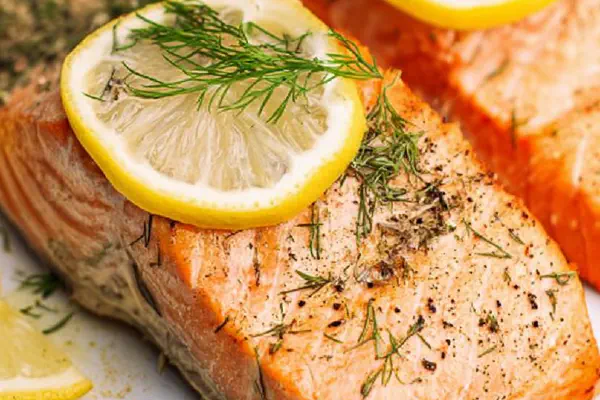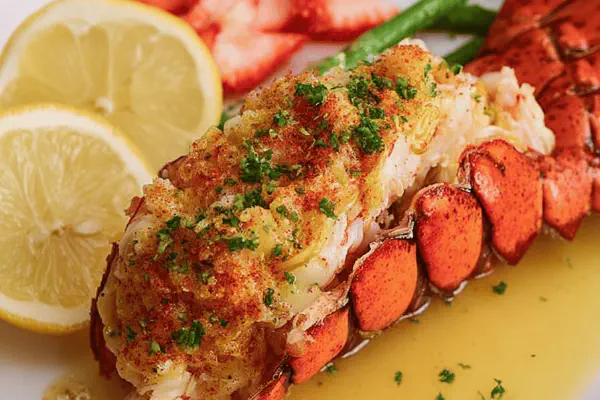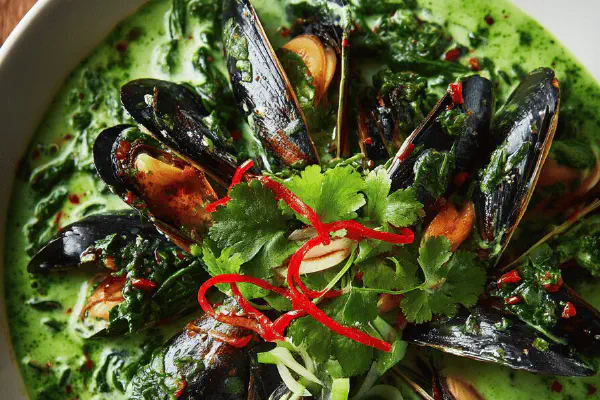Lemon Dill Salmon Twist

By Emma
Certified Culinary Professional
Ingredients
- 24 ounces salmon cut into fillets or one large filet
- 3½ tablespoons fresh lemon juice
- fine sea salt to taste
- freshly ground black pepper to taste
- 2 tablespoons fresh tarragon chopped finely (substitute for dill)
- cooking spray or olive oil for coating
About the ingredients
Method
- Preheat oven to 350°F. Spray 9×13 inch rimmed baking pan or baking sheet with light olive oil or cooking spray. Don't skip this; fish sticks easily.
- Lay salmon pieces in a single layer. If fillets, try to keep spacing — crowding traps moisture, ruining crisp edges. If one big filet, center it.
- Pour 3½ tablespoons lemon juice evenly over salmon. The lemon acid starts breaking fish fibers. A subtle tang that cuts through richness — no need for vinegar or citrus overload.
- Season with fine sea salt and freshly ground black pepper to taste. Salt early allows more flavor penetration. Pepper late for fresher aroma.
- Sprinkle 2 tablespoons finely chopped fresh tarragon instead of dill. Tarragon has anise notes, giving a gentle herbal lift with slight sweetness, a different take if dill unavailable or too grassy.
- Place pan in oven. Cooking times shift based on thickness. For fillets, 9-12 minutes per inch of thickness, depending on size. For large filet, 16-18 minutes straight. Listen for gentle sizzling sounds near edges.
- Fish edges turn opaque first, start to flake with light fork pressure when done. Don’t rely solely on timer; a few seconds too long results in dryness, too short leaves raw spots.
- Thickness matters. Around 1-inch fillets come out tender with a subtle pinkish glaze inside, flaky but moist. Thicker pieces need 2-3 extra minutes, watch edges closely.
- Remove from oven when fish flakes easily but still offers resistance under fork — that slight springiness means juicy flesh.
- Rest fish 3 minutes loosely tented with foil. Internal heat finishes gentle cooking and allows juices to redistribute — skipping rest makes salmon dry and tough.
- Serve immediately. Optional: drizzle a little extra lemon juice or a thin pat of butter to add glossy richness. Avoid sauces that mask the fresh lemon-herb profile.
Cooking tips
Chef's notes
- 💡 Start with preheating oven; 350°F steady heat avoids drying edges like high temps might. Use rimmed pan well coated in olive oil or spray because fish sticks bad without. Lay fillets spaced apart. Crowding traps moisture, makes edges soggy, ruins texture. One big filet center placement only. Lemon juice goes right before baking; no long marinade or fish 'cooks' chemically. Salt early; prepares muscle fibers for deeper seasoning. Pepper after baking for punchy aroma. Fork test key. Don’t fully rely on clock; edges opaque, flakes separate layers gently, slight spring under pressure means done.
- 💡 Substitutions matter. Tarragon in place of dill changes flavor noticeably—lighter, with anise notes, slightly sweet. Dill can overpower, grassy or bitter. If neither fresh, try basil or thyme but watch balance, can dominate. Prefer fresh herbs always; dried lose brightness, risk over-concentration. Lemon juice swaps for lime but lemon smoother acidity, no sharp edges. Baking pan shape size counts; rimmed pan collects juices preventing burning and pooling. Olive oil or spray required; no coat means skin sticks, tears apart during cooking; cleanup nightmare too. Timing loosely set; thickness parameters shift cook time by minutes. Larger filet 16-18 minutes; fillets 9-12 per inch thickness.
- 💡 Visual cues trump timers. Fish edges start opaque first; watch them closely. The flesh begins to separate in layers, and gloss fades—no clock can replace this. Fork pressure test essential—light gentle prod, if flakes but still springy under fork stops cooking now; too long dry chalky texture develops. Rest fish 3 minutes tented loosely with foil. Internal heat continues cooking, redistributes juices, makes texture more tender. Skip this and juices escape plate, dry meat happens. Cooking sounds matter, subtle sizzling near edges signals heat penetration. Silence? Likely too low temp or overcooked already.
- 💡 Avoid overcooking traps. If salmon thin, check early to prevent dry edges. The timing is flexible based on thickness but err on less time. Between thickness steps, add 2-3 minute increments but watch visual signs constantly. The lemon juice acid starts breakdown but not too long should be left on fish pre-cook; no vinegar replacements needed—too harsh and masks flavor. Coating baking pan thickly helps create crisp edges where fish meets hot metal. Avoid steaming fish in own juices by single layer spacing; stacked or crowded fish steams, texture dull and spongy. Oil or spray essential for crispness; skipping causes sticking, tearing.
- 💡 Finishing touches matter last. Serve immediately after resting; add options like thin pat butter or drizzle lemon juice on top at serving for extra gloss and flavor lift. Avoid heavy sauces that mask herbal lemon profile; want subtle aromatic fresh herbs highlighted. If you can get wild-caught salmon better flavor and less muddy fish taste but thawed fully thawed frozen works fine too. Fresh lemon juice better than bottled for brightness. Salt coarse or flaky can leave gritty spots; use fine sea salt instead. Fork test always trumps timing; texture and appearance the final authority over doneness timing estimated.
Common questions
How to tell salmon doneness fast?
Look for edges opaque first. Flakes separate when pressed gently with fork. Flesh should have slight give, springy not mushy. Avoid timing alone; thickness varies. Listen for gentle sizzling near edges; quiet is off. Rest after baking locks in juices for texture.
Can I substitute dill with other herbs?
Tarragon recommended for subtle anise notes, less grassy than dill. If no tarragon, try fresh thyme or basil but both change flavor profile more. Dried herbs not advised; brightness lost, flavors intensify weirdly. Fresh herbs always better for vibrant aroma and texture.
What causes dry chalky salmon?
Overcooking biggest factor. Timing off or thickness not accounted. If fish flakes too easily with no resistance, overcooked. Salt early helps muscle relax, makes meat tender. Rest after cook essential to redistribute juices. Low oven temps cause undercooked spongy texture; too high scorches edges. Find balance; rely on visual cues and fork test.
How to store leftovers?
Cool quickly; store airtight in fridge up to 2 days. Reheat gently in oven at low temp or covered skillet to prevent drying. Avoid microwaving straight on high; dries out fish fast. Can freeze cooked fish but texture changes; better fresh. If freezing raw, thaw overnight fully in fridge for best results.



